Equipment
About Getting Your Camera Wet… Teardown of a Salty Sony A7sII
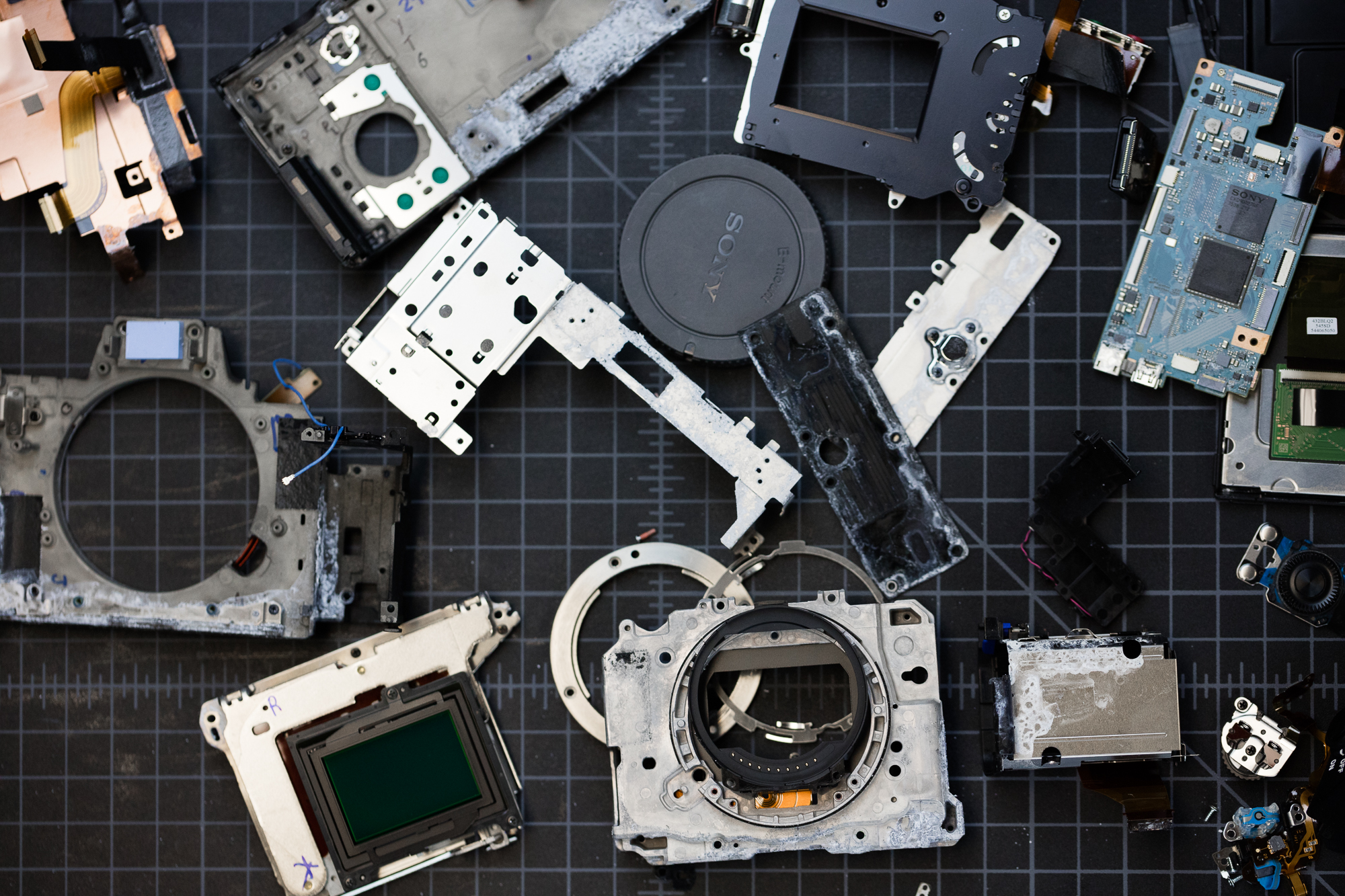
People think that because I expect the worst and try to prepare for it, that I’m negative. That’s not it at all. I’m not a negative person; I’m cheerfully cynical. If I expect the worst and it doesn’t happen, I’m happy because things went better than I expected. If I expect the worst and it does happen, I’m happy, because I can tell everyone, “See, I told you this would happen.” So I expect the worst because that keeps me happy.
This post is a superb example of why expecting the worst is reasonable. There are all kinds of badness in this one post. There’s nothing good here at all. Well, except for Aaron’s disassembly. That’s very good. Everything else here is about mistakes.
Here’s a list of bad things that we’ll discuss.
- Camera manufacturers market their equipment as weather resistant. But if you get water inside the camera the warranty is void. So that’s pretty much “we guarantee it will work unless it breaks.”
- People think weather resistant means waterproof because they want to believe that.
- Service Centers play the impact/moisture damage card so much that everyone assumes they are full of …shirt… when they say so.
- There are two kinds of photographers: Those who have ruined a camera from water damage and are careful about water and see #2.
- Most service centers won’t work on a water damaged camera, even if you pay them. Some won’t even open it up to look inside if they see evidence on the outside.
So here’s the background. A Sony a7sII camera came back from rental and was completely dead when tested. The sharp-eyed tech noted some corrosion around a couple of screws.
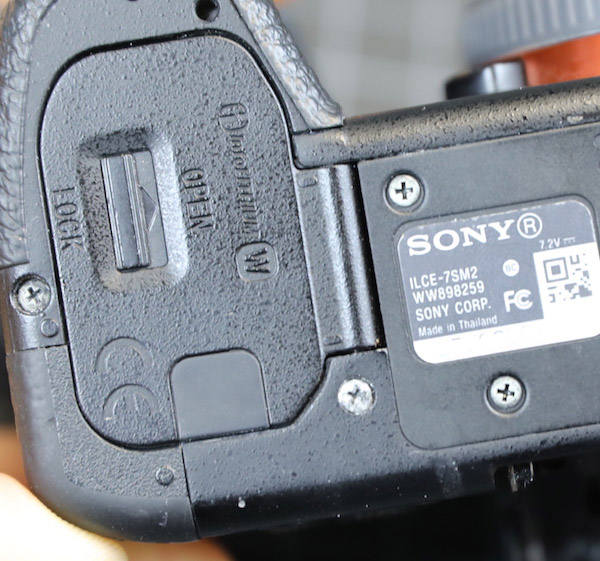
Lensrentals.com, 2017
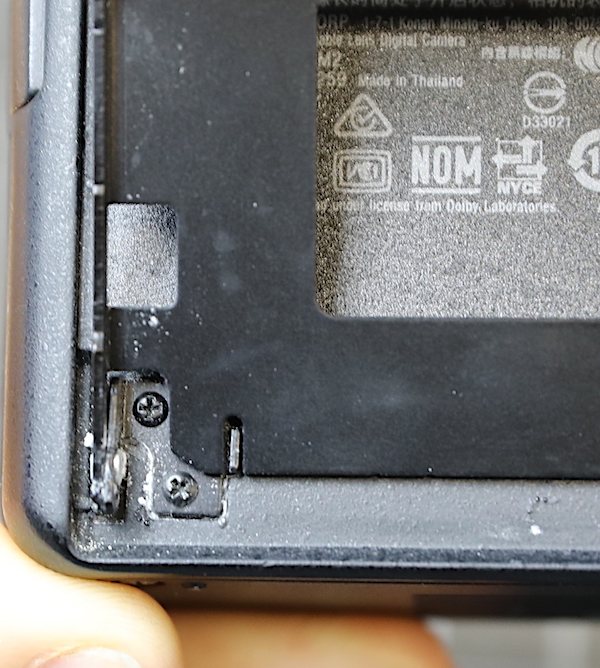
Lensrentals.com, 2017
That’s not very impressive, but the camera was dead and had been rented near the ocean. (I should probably add that this kind of thing is on our inspection checklist, so two different techs would have to miss the corroded screws for the camera to go out this way. I’m not saying it’s impossible, but it’s not likely.)
Since the camera was bricked, it was going to need repair if possible. We know from long experience that this service center would refuse to even open the camera because of the corrosion on the screws. So we opened it up to look inside ourselves.
Just so you can play detective along with us, the two corroded screws were on the lower left part of the camera, near the battery door, so we started this exercise thinking salt water might have splashed up onto the left-bottom side of the camera.
So, Salt Water or Coincidence? You Make the Call.
We started by taking off the Sony a7sII viewfinder cover. There’s some dust under there but no signs of corrosion. The copper piece left behind on the out-of-focus camera body would be completely corroded with the slightest exposure to salt water.
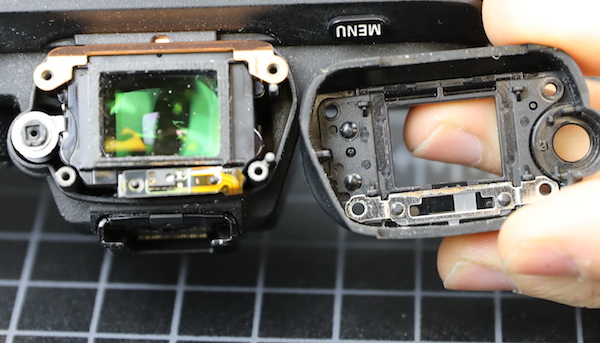
Lensrentals.com, 2017
Next, we took off the battery door. This is an easy water access because the foam seal doesn’t go all the way around the door (it stops where the forceps are pointing). There’s no obvious corrosion here although one screw does look corroded and the stripping itself looks dingy.
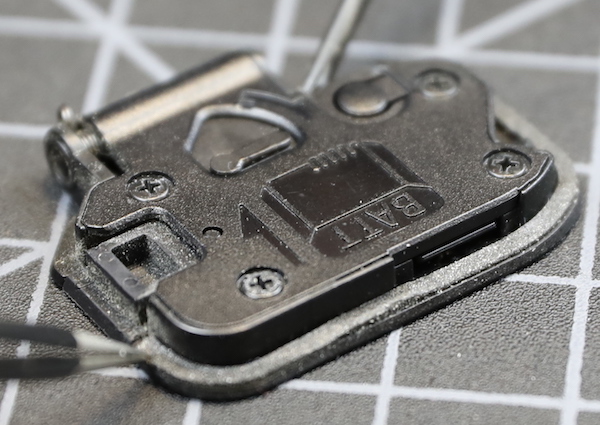
Lensrentals.com, 2017
Removing the bottom plate, though, shows that this camera definitely got salt water inside. The white stuff is actual salt residue. If a new tech has a question about whether it’s salt, we tell them to taste it. (An experienced tech can taste it and tell which coast the water was from.)
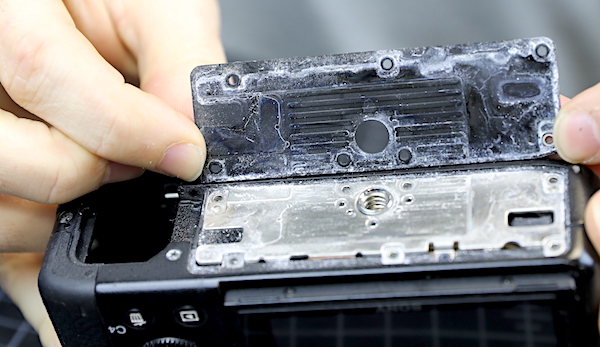
Lensrentals.com, 2017
By this point we’ve pretty much ruled out the ‘camera coincidently died’ theory and have pretty well confirmed ‘got splashed with salt water and the outside was wiped down carefully’ theory. It’s probably no coincidence that the two corroded screws and the leaky (by design, not by a defect) battery door are right in this area.
But we also know that the viewfinder had no salt in it so we had some hope that camera might not be a total loss. You know hope? That happy sensation that life crushes out of you? So we continued the disassembly to see how bad things were.
Taking that metal base plate out to see the inside made us feel worse. The salt was literally caked inside.
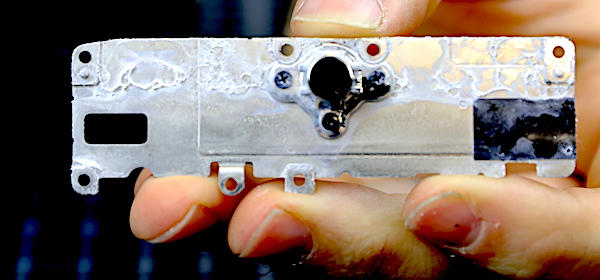
Lensrentals.com, 2017
Up until now, there was just salt on body parts. That could be cleaned, and anti-corrosion treatment applied. But this ‘weather resistant’ camera has absolutely no weather resistance on the bottom. With that metal plate out you can see there’s a nice clear path up inside to all the important parts. The metal plates you see are the camera’s sensor and the IBIS system. So that hope we had, well, the reality is a 6 point favorite over hope.
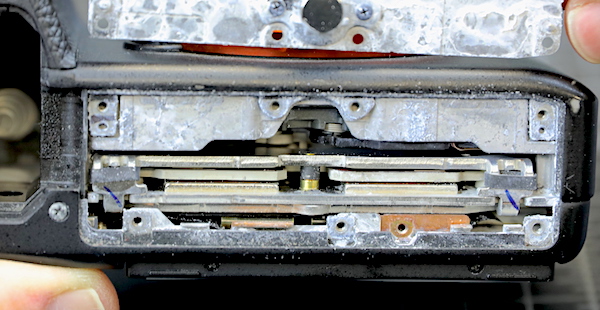
Lensrentals.com, 2017
The next step is to remove the camera back and to do that we first have to take the LCD off.

Lensrentals.com, 2017
There’s more salt caked around the base of the LCD hinges.
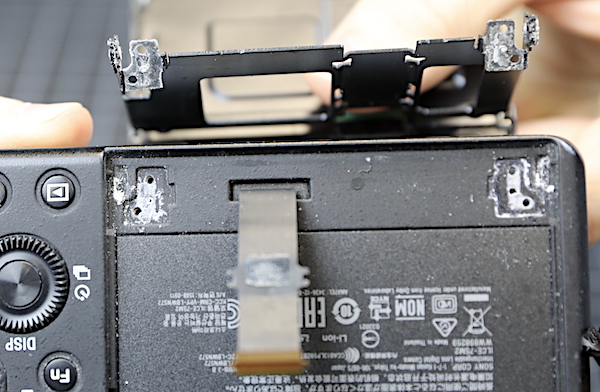
Lensrentals.com, 2017
The next step was to remove the back of the camera.
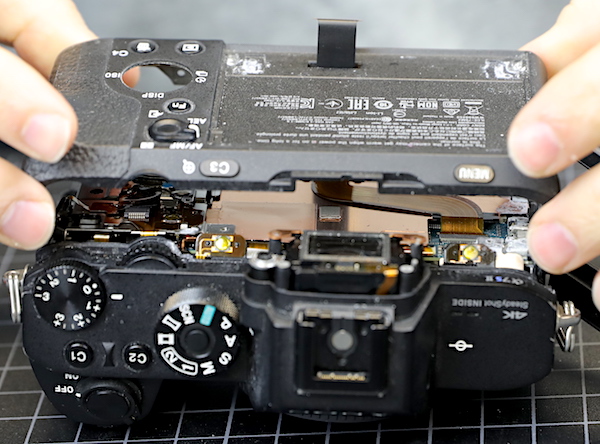
Lensrentals.com, 2017
This finished crushing the last of our hopes and dreams that this camera might be salvageable.
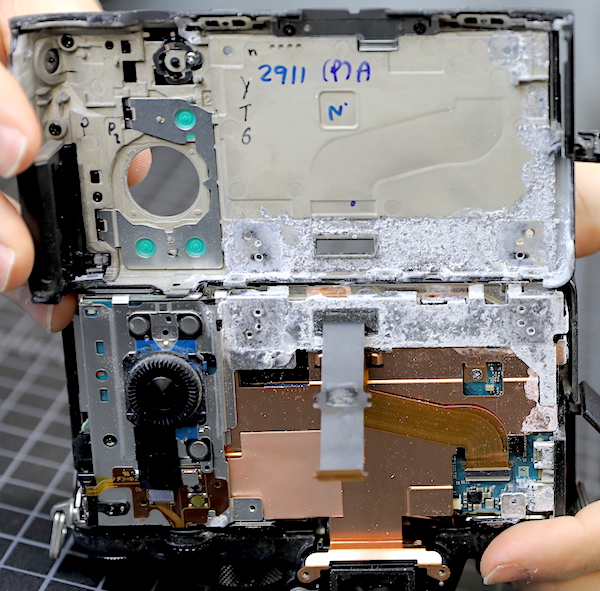
Lensrentals.com, 2017
Yep, that’s salt caked inside the back along the bottom of the camera, and along the side where the ports are. At the bottom right, just above Aaron’s finger, you can see the HDMI and multiports as they insert into the main PCB. They’re both covered in salt and corrosion, so at the least, the main board has to be replaced.
But the amount of salt and corrosion here and on the bottom means we wouldn’t trust anything in this camera, ever again. It can’t even be a parts donor — the chance that those parts will eventually corrode and fail is too high. That’s why many service centers won’t repair water damaged cameras; they have to give a warranty after the repair and chances are very high something they didn’t replace is going to fail during the warranty period.
Just to complete the exercise lets see what the rest of the insides look like. The aluminum plate comes off next. You can’t tell from the picture, but there’s been enough corrosion that the metal surface is pitted, that’s not just salt you see in this picture.

Lensrentals.com, 2017
Likewise, the copper plate underneath, even though it didn’t get nearly as soaked, is already pitted and discolored. Saltwater just eats up copper.
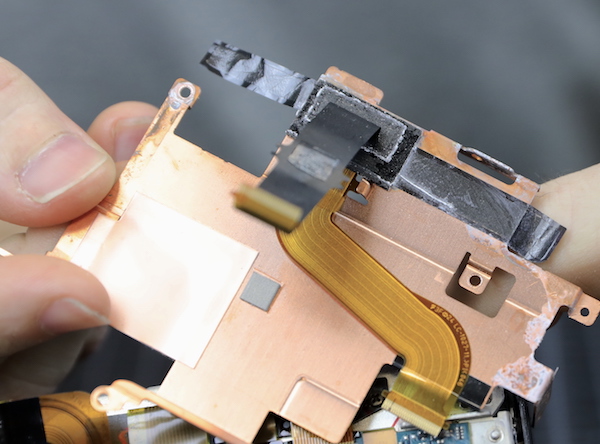
Lensrentals.com, 2017
The SD card assembly gets removed next, and it, too, has enough corrosion that it would require replacement.
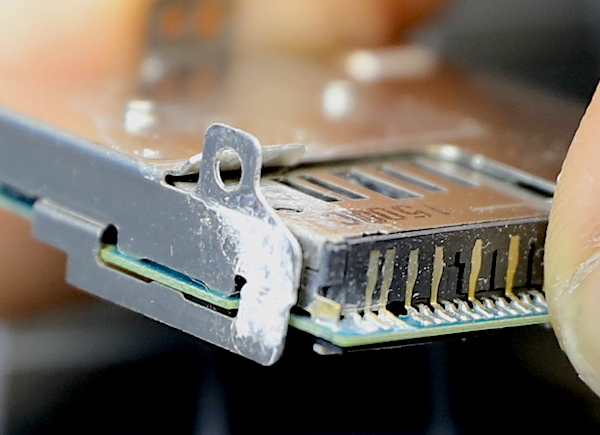
Lensrentals.com, 2017
With the covers off we can look at the damage on the board a little better.

Lensrentals.com, 2017
Looking a little closer shows that the actual pins and traces around the ports are dissolving.
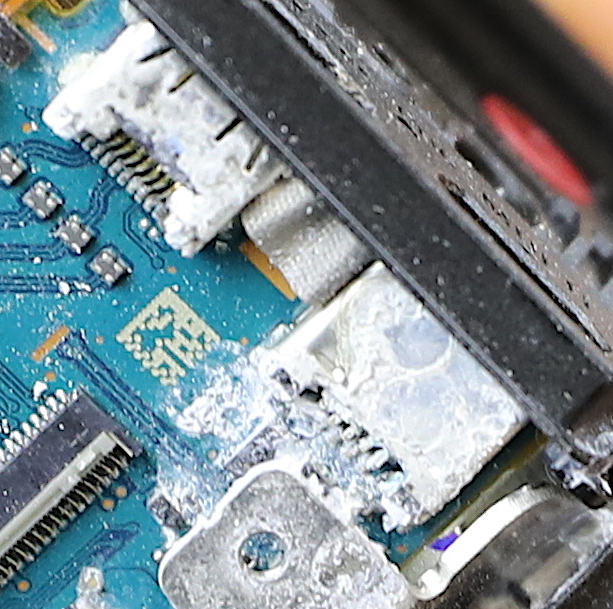
Lensrentals.com, 2017
And on another area of the board, the traces and pins are nearly as bad.

Lensrentals.com, 2017
Even though we hadn’t seen any apparent corrosion around the viewfinder we took it out just to make sure there was none on the inside; there wasn’t.
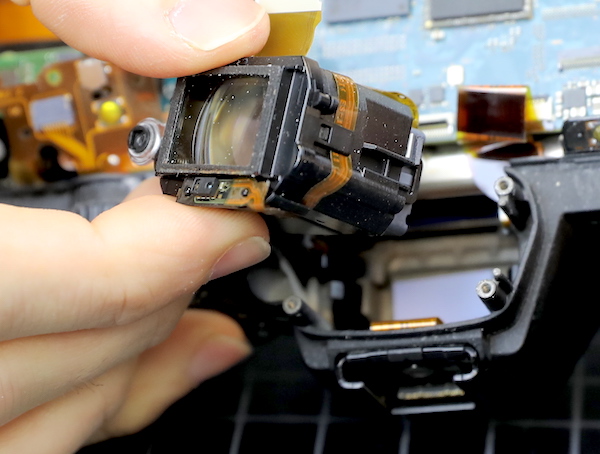
Lensrentals.com, 2017
We took off the grip to assess the battery box. While the box was fine we saw another leak in a poorly sealed area – the camera strap lugs don’t have a seal and some water had obviously leaked in there (red arrow).
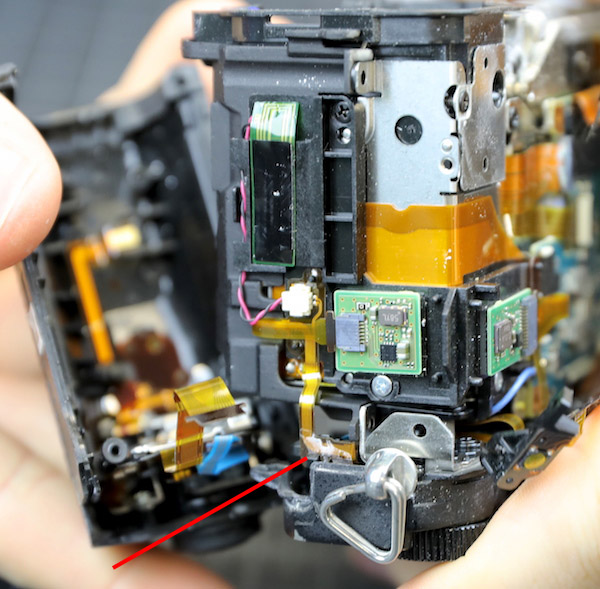
Lensrentals.com, 2017
The top assembly came off next, and at first glance, it all seemed OK.

Lensrentals.com, 2017
However, when we took off the metal plate to the right, we found more salt and corrosion underneath it.
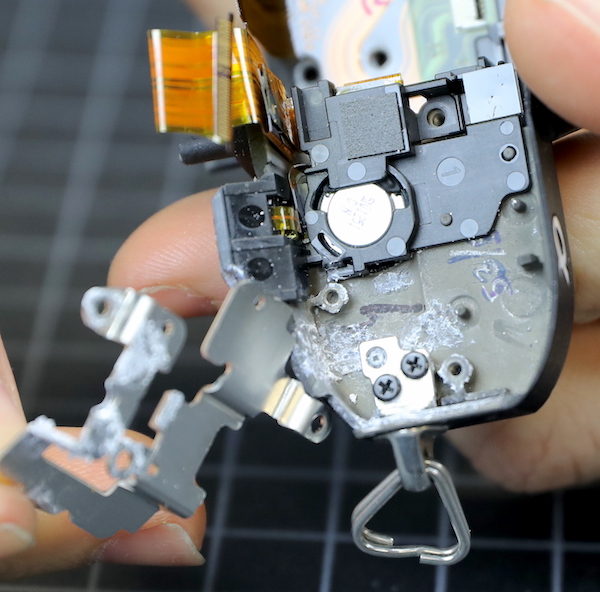
Lensrentals.com, 2017
Not that it matters, but the bottom of the PCB seems to have remained dry.
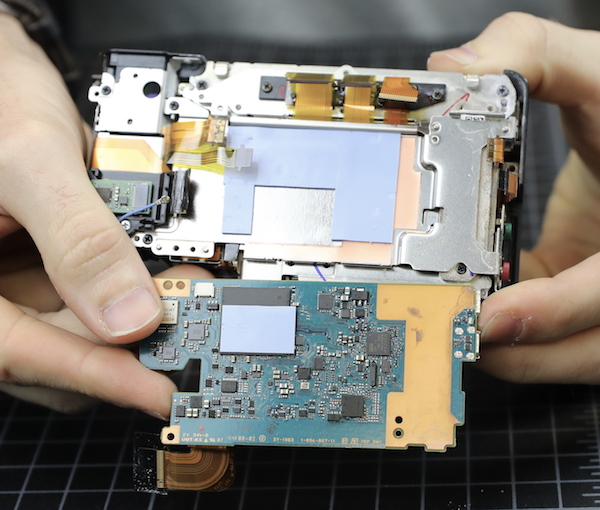
Lensrentals.com, 2017
Removing the next layer of shielding lets us look at the in-body stabilizer (thick aluminum pieces) and the circuit board behind the sensor. There’s a little salt tracking along the right edge and some corrosion of the screw in the upper right (in the picture). The marks are from the assembly; I’m not trying to draw your attention to anything.
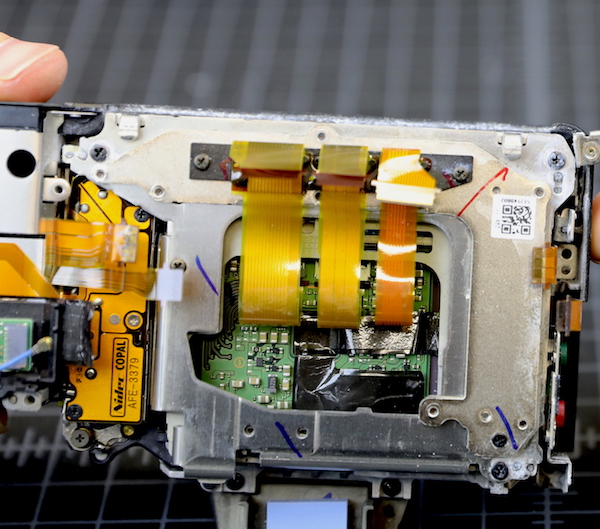
Lensrentals.com, 2017
The corroded screw, along with a few others, holds the IBIS in place to the camera chassis.
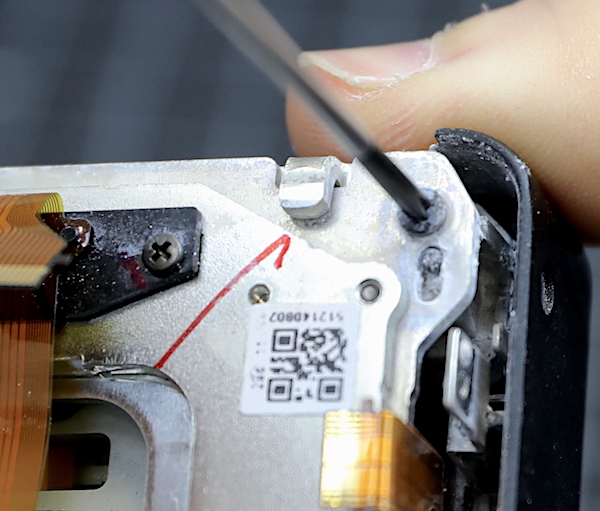
Lensrentals.com, 2017
After removing them it became apparent that even screws that looked OK on the surface had some corrosion along the head.

Lensrentals.com, 2017
The sensor itself seems fine, and the film of salt in the two corners of the IBIS doesn’t seem too bad to look at.

Lensrentals.com, 2017
But salt water tends to wick into the areas where it can do the most damage. The sensor / IBIS assembly has to be shimmed to the chassis to keep it appropriately aligned to the lens mount; a tilt of 10 microns might be noticeable. The shims and shim mounts had soaked up salt water to the point they were fusing together; we had to pry the shims off.
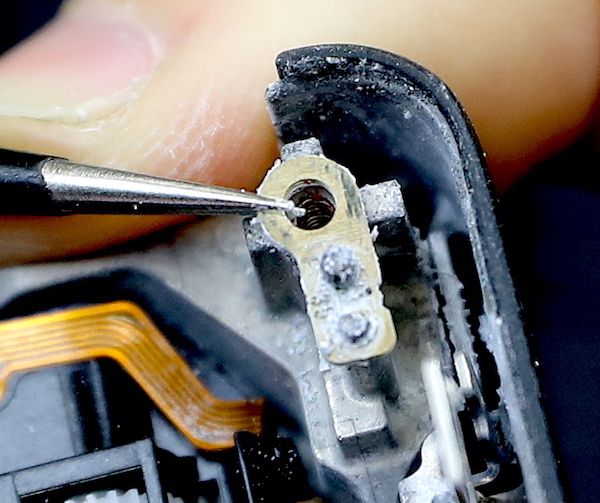
Lensrentals.com, 2017
After removal, it becomes evident that the shims and mount areas were much more affected than the film of salt on the back of the sensor assembly suggested.
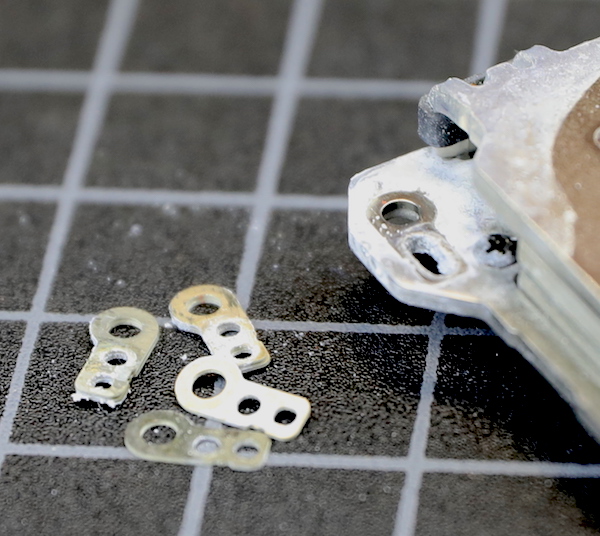
Lensrentals.com, 2017
The last piece out was the shutter assembly. We had assumed it would be protected, but nope. You can barely see it because I overexposed the picture, but there’s salt over by the motor and gears of the shutter assembly, too.
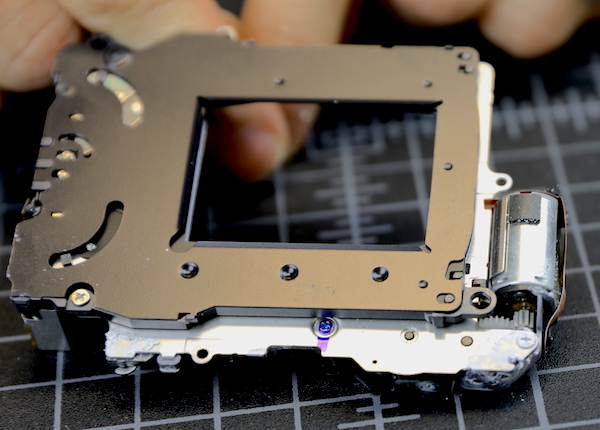
Lensrentals.com, 2017
So, a Little Detective Work
This camera here was never fully submerged in water; the sensor chamber and viewfinder were clean. The reality is, the entire top assembly was clean except for the edges where water leaked in from the strap lugs or ports. But the bottom and port side was pretty saturated. So the likely scenario was taking pictures near the surf and water splashed up from below and probably behind. Looking at the salt stains on the chassis supports that idea; the bottom and edges are saturated. The edge stains go higher than the lens mount, there would have been marks in the sensor chamber if the camera had sat in water that deep.

Lensrentals.com, 2017
So What Did We Learn Today?
Salt water is really, really bad for cameras. Even in small quantities. Really. Bad.
If this had been fresh water there’s a chance the camera would have survived. Saltwater, no way.
Trusting ‘weather resistance’ is risky business.
They all say they have it. But none of them define what it is or how much they have. This camera had easy water access from the battery door, the entire bottom, and around the camera strap lugs that we showed you. It also has two rotating dials that you can pour water through, but this splash didn’t hit those. The viewfinder and hot shoe are a bit leaky, too.
Wiping the camera off carefully and saying it never got sprayed with water isn’t very efficient at anything other than establishing your level of trustworthiness.
And just before it starts, we don’t discuss interactions with individual customers.
While I rarely defend the service center, there are good reasons why they won’t touch your water damaged camera.
On the front end, this didn’t look that bad. But repair would have been impossible. You’d have replaced the entire camera except for the viewfinder. Even when it’s less severe, you can never be sure what part has just enough corrosion to fail in another month or two. (That’s why we won’t reuse the viewfinder even though it seems fine.) As an aside, one of the reasons we’re so vigilant about corrosion is we have seen a lot of cameras that got splashed and seemed fine fail two or six weeks later.
The beach is the sworn enemy of your gear. If the salt-spray doesn’t get you, the sand will. When you go into hostile territory, take appropriate precautions. And yes, Johnny, I know you spend every weekend photographing on the beach and nothing bad has ever happened to your camera. Yet.
Roger Cicala and Aaron Closz
Lensrentals.com
October, 2017
Author: Roger Cicala
I’m Roger and I am the founder of Lensrentals.com. Hailed as one of the optic nerds here, I enjoy shooting collimated light through 30X microscope objectives in my spare time. When I do take real pictures I like using something different: a Medium format, or Pentax K1, or a Sony RX1R.
-
steve wander
-
Tuolumne
-
YogaSlackers
-
Ernest Green
-
John Glavey
